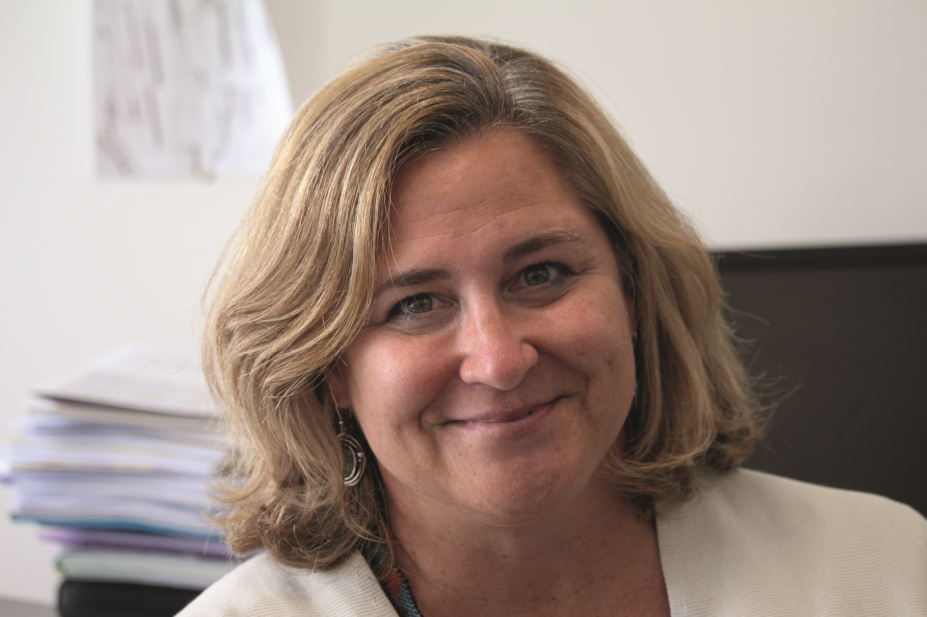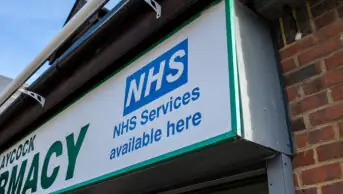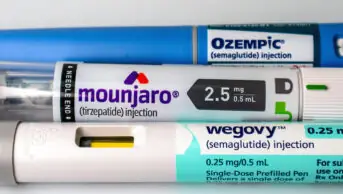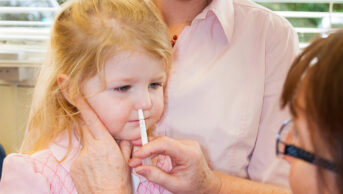
John Zarocostas
Meg Caroline Doherty is co-ordinator of treatment and care at the department of HIV/AIDS at the World Health Organization (WHO). She provides overall technical and managerial support to treatment and care for adults, adolescents, children and pregnant women, as well as the development of the consolidated global antiretroviral treatment guidelines and all technical updates related to HIV treatment and care. She leads a team of technical experts in the fields of adult, adolescent and paediatric HIV, eliminating mother-to-child transmission, tuberculosis and HIV collaborative activities, HIV service delivery, and laboratory and diagnostics for HIV.
What triggered the release of the new WHO guidelines and strategic objectives to counter HIV drug resistance?
The WHO is launching three key documents related to what we call HIV drug resistance, which is really a stage when somebody who has been taking antiretroviral (ARV) drug therapy, or about to take ARV therapy, where the virus has stopped responding to the medicines. Moreover, some of the information that we have received from a number of national surveys has helped us understand what is happening. Therefore, we have guidance on doing national surveys and have now put together in our HIV drug resistance support documents outcomes from 11 of those surveys.
The surveys showed that, among people about to start ARV treatment in six of those 11 countries, the level of resistance to efavirenz (EFV) or nevirapine (NVP) — the WHO-recommended and widely used non-nucleoside reverse-transcriptase inhibitor (NNRTI) ARV drugs — had reached what we think is a critical level threat of 10%. The countries were Namibia, Uganda, Zimbabwe, Argentina, Guatemala, and Nicaragua.
We decided we needed to look at how we can address HIV drug resistance
Moreover, because we have seen that is happening from surveys conducted, we decided we needed to look at how we can address HIV drug resistance. So, we have also put out two other documents to help guide us: a global action plan to convene partners in countries, and implementers of strategic objectives to address HIV drug resistance by improving quality of care, monitoring for drug resistance, supporting laboratory development, as well as country ownership of this issue and problem.
We have also put out a new guideline, which is based on the fact that we were starting to see rising levels of drug resistance. The guideline has taken account of all the data available. We conducted systematic reviews, talked to experts, and have come up with two key recommendations. There was consensus on the fact that we can see change happening to populations when that level of resistance reaches 10% for NNRTIs. So that seems to be the level at which everyone agreed we need to take action and we should start to put into place some other approaches to be able to address drug resistance. The second recommendation we made is that, if countries reach that 10% threshold, they should start considering using alternative first-line therapy. Alternative first-line treatment therapies include a new class of drugs called integrase inhibitors. Dolutegravir (DTG) is one integrase inhibitor that is getting a lot of traction these days in low- and middle-income countries. There are a number of other integrase inhibitors that are available and coming in the pipeline, but this is the one that is currently available to low- and middle-income countries.
Was this a precautionary move because your joint report with the Global Fund and the Center for Disease and Control Prevention concluded that, in sub-Saharan Africa, you would have more than 135,000 deaths and 105,000 new infections over the next five years if no action is taken, and the cost of treatment would increase by $650m?
It is part of the reason. When we look to make any kind of recommendations or guideline changes, we look at the evidence coming from randomised controlled trials. In 2016, we had already recommended dolutegravir as a key ARV drug. However, when we look at other aspects, and bring in the new factor of increasing drug resistance, we are saying “yes, the evidence is pushing us to go a little bit faster”. Nevertheless, there are many other reasons. This drug is good. It has low toxicity, can be provided as a single pill per day and then formulated as a one-pill-per-day fixed combination. It also has low side effects, is a small pill, and seems to have a higher barrier to developing resistance. So in many ways, it is a drug that everybody has been interested to see come to the market for low- and middle-income countries because it seems those who are taking it are doing very well on it. There are some side effects, but those seem to be tolerable.
What were the key findings of the country surveys?
We had 11 countries that submitted their pre-treatment survey to WHO. Six out of those 11 had levels that reached thresholds of 10% or more while five did not. Of the 11 countries, four are in Africa, six in the Americas, and one in Asia. It is difficult to compare and contrast when you have only 11 countries submitting data, and it is difficult to say it is fully generalisable to all regions of the world. What it tells us is that there is a trend: there is an alert signal and we need to start thinking about it and do something with this information. We would like to see more surveys done in other regions of the world and to see trends over time.
Will the new ARV drug be widely available? How will it work?
The drug company that owns the drug has made it available to the generic companies, working through something called the medicines patent pool. There will be voluntary licences around the world and many countries in Africa, south and south east Asia, and a few in the Americas are actually going to be able to have that voluntary licence. There are some countries, however, that will not have licences, and that will be a more difficult situation for them in terms of pricing.
What is the price differential between procuring this drug in a rich country such as the United States or UK, and procuring it in a sub-Saharan African country like Zimbabwe or Uganda?
The prices will definitely vary. Currently, the estimated price of a generic in the low-and middle-income countries that have the voluntary licence and where a number of generic companies are formulating the drug into a fixed-dose combination could go as low as $70–$80 per person per year, or equivalent to the price for the current tenofovir, lamivudine and efavirenz combination. Now, in other countries that price will go up. Moreover, I think that is where countries can work on pooled procurement or negotiating the prices of generics.
Overall, the expected pricing of dolutegravir will be approximately $78 per year for the fixed dose combination. When procured by itself, dolutegravir could be as low as $44 per person per year. When you move into higher income areas it could go anywhere between $250 and $1,500 per person per year, and that will be a challenge for some countries. But we have seen Brazil and other countries in Latin America that are either lower middle-income or higher middle-income countries now able to negotiate prices, and able to provide the drugs for their population in general.
We have 70% of people tested, 77% know their status, and 82% on ARV are virally suppressed. However, we still have a bit of work to do
How many countries are already procuring the more potent ARV?
We know already approximately 20 countries have been putting the more potent ARV on their guidelines and around 17 are now in the process of starting to procure. Botswana and Brazil have already been using the dolutegravir regimen for more than a year.
Many of the countries, however, are planning to start in early 2018, if not sooner. Kenya is starting as of the end of this month, and Nigeria and Uganda, will start later in 2017.
With more people accessing ARV therapy — now at 19.5 million of the 36.7 million people worldwide living with HIV — is there a risk you might also have an increase in HIV drug resistance?
It is theoretically possible that, as we put more people on therapy, we could see more resistance, but we would have the added benefit of reducing death, and reducing new infections, and still control the epidemic.
We can see this level of resistance and, at the same time, see that we can have 82% of people with a suppressed viral load. These concepts can co-exist for the moment, but if we do not address the drug resistance or start to address it by improving the quality of our programmes and changing the drugs, then we may put that 82% viral suppression number at risk.
It is theoretically possible that, as we put more people on therapy, we could see more resistance, but we would have the added benefit of reducing death, and reducing new infections, and still control the epidemic
Do countries have enough resources to address the challenges of drug resistance and implement your guidelines?
In our guidelines from the WHO, we are putting out the gold standard of what we would like countries to do because it has been based on the best evidence available. How that gets implemented is different in different countries and it can become a challenge based on whether the country has enough funding either on their own resources or from external sources. In the HIV sphere we have done an enormous job trying to reach the target of 90-90-90 by 2020 (90% of all people living with HIV knowing their HIV status; 90% of all people with diagnosed HIV infection receiving sustained antiretroviral therapy; and 90% of all people receiving antiretroviral therapy having viral suppression). We are now at a tipping point. We are halfway there to getting people on therapy. We have 70% of people tested, 77% know their status, and 82% on ARV are virally suppressed. However, we still have a bit of work to do.
What is your message to policymakers globally on meeting the HIV challenge?
We are in a good position now. We have come too far not to do the last mile of work. However, we know what to do and we should take action now so we can keep all the good traction we have and all the outcomes that we have right now by keeping people on therapy. In HIV we are lucky that there is a good pipeline of drugs and, for the situation of HIV drug resistance, we have a good alternative drug to combat it.


